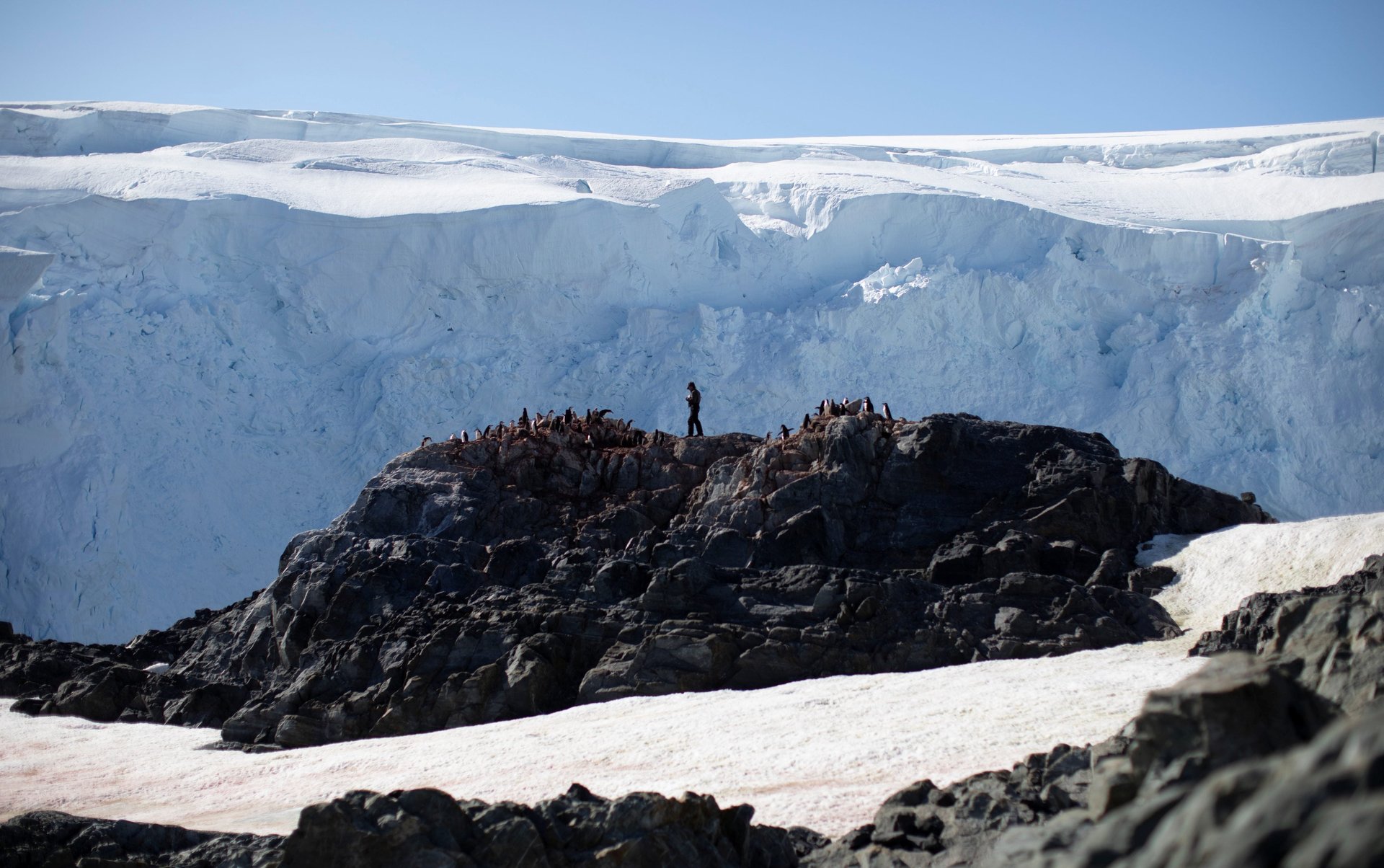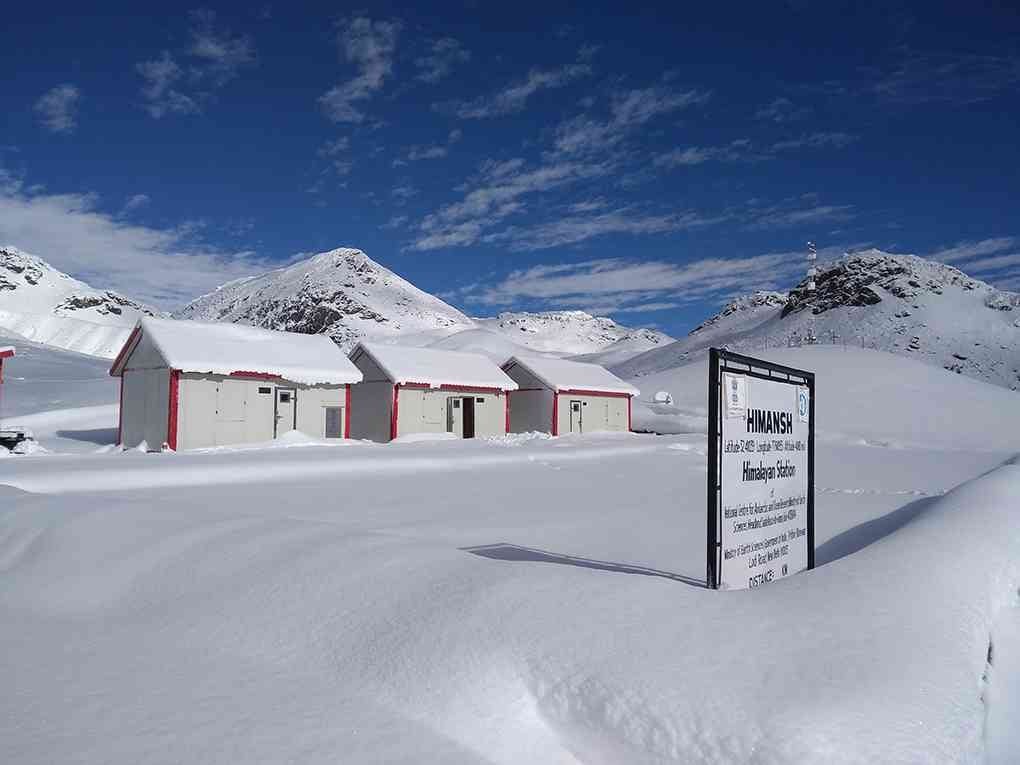It is time India engaged more seriously with the world over the Antarctic
In 1981, science had eased India’s entry into the Antarctic. However, despite three stations (including one decommissioned) and 40-odd scientists and support staff visiting the cold continent each winter, blessed with an annual budget well over 100 crore rupees, India is yet to enter the formidable fortress’s geopolitical arena in earnest.


In 1981, science had eased India’s entry into the Antarctic. However, despite three stations (including one decommissioned) and 40-odd scientists and support staff visiting the cold continent each winter, blessed with an annual budget well over 100 crore rupees, India is yet to enter the formidable fortress’s geopolitical arena in earnest.
Atmospheric warming, changing precipitation patterns, biodiversity losses and melting ice sheets have led to a new global narrative—climate change. The Antarctic ice sheet is the largest in the world, accounting for over 62% of Earth’s freshwater.
With the greenhouse emissions continuing to rise, scientists working in the region point out that warming events over the Antarctic are projected to become more frequent and are likely to last longer. Of the many outcomes, one that is most definite is the rising waters of the oceans. Under an intermediate emission scenario, the sea level rise is likely to rise from 0.4 metre to 0.8 metre, in a non-uniform manner across the world.
The global interest in mitigating and adapting, to power humankind with the knowledge of what is in store, has grown manifold in the recent decades, with several multi-partite international agreements looking to lower emissions.
Diplomacy over Antarctic
As the ramifications of climate change are intensely associated with the cryosphere, a concerted effort to build a scientific understanding of these regions—high mountains and the Arctic and the Antarctic has been prioritised by many nations, including India. Antarctic science has been the key to the coming together of opposing nations amidst a fragmented and animosity-driven world order. In 1959, the Antarctic Treaty System was ratified by 12 signatories that included the United States and the erstwhile Soviet Union. Today, with 54 signatories (29 consultative and 25 non-consultative parties) the scientific activities on the icy continent have grown in volume and value.

However, where science has made quick headway, the policy has been slow to follow. More immediate problems of livelihood, national security and elections (for democracies) keeps a stranglehold on countries. A recent virtual high-level Antarctic Parliamentarians Assembly, organised by the United Kingdom All-Party Parliamentary Groups on December 1, attempted to lend strength to the forum’s momentum.
The first Antarctic Parliamentarians Assembly was one of its kind, an in-the-room event held in London in 2019, culminating in a signed declaration that pointed towards greater involvement of interested nations and stringent environmental protection. The platform, a brainchild of the Conservative member of parliament, James Gray, explicitly looks towards involving all legislators from nations that are signatories of the Antarctic Treaty System.
Dominated by scientists, this year’s meeting was attended by legislators from 24 nations, up by 12 from the previous one. Governmental representatives from various nations, including the head of China’s Environment Protection Committee, Cheng Lifeng, briefly reiterated its commitment to upholding the Antarctic as a universal common heritage of mankind.
But as the proverbial “actions speak louder than words” go, it may be noted that the legislators of China and Andrew Bayly of New Zealand (among many other scientists from the Indo-Pacific region) sat through the night and early morning (this being an online endeavour), participating keenly in the discussions, exhibiting dedication beyond the call of duty.
India lags behind
Juxtaposed against this was the confirmed yet missing delegation of Indian parliamentarians. Neither was there any scientific or diplomatic involvement, nor any statement from India presented to the offices of the All-Party Parliamentary Groups, which they could (as they have for other nations) host on their website. Such apathy towards polar diplomacy is confounding.
Scientists project that sea-level rise, as a result of cryospheric melting, is likely to displace a significant section of people, especially true for the heavily populated coastal areas of East and Southeast Asia. With differential sea-level rise, some areas in the region are likely to be worse off.
The process is already underway with Sunderban’s climate change refugees having been forced to abandon their lands and relocate elsewhere. What is more startling is that people crossing international borders due to climate change falls outside the purview of almost all international legal frameworks. This is particularly worrisome for island regions, potentially fracturing entire communities and identities.

With “climate-resilient” building projects such as the Eko Atlantic in Lagos, Nigeria, gaining acceptance among the wealthy and the influential (US Consulate looking to be located there) at the cost of greater coastal erosion beyond, perhaps harkens the crumbling of the welfare state model, leaving the poor to scramble on stilts against the rising waters.
As policy perspectives continue to lag behind (the Indian Antarctic Bill—a legal mechanism and the Draft Arctic Policy are yet to be passed by the Parliament), climate change may become the singular force that the world and more importantly the Indian subcontinent may have to reckon with. Dutch authorities, on the other hand, in preparation for such future drought/flood and sea-level rise scenarios have already begun restructuring their coastal infrastructure.
Fighting climate change
As a starting point to engage not only legislators but industries and businesses too, the emerging interest around the Indo-Pacific region can be perhaps be utilised. This could help build a policy framework that includes a cryospheric component -modelling complex satellite assisted inundation scenarios along with the Indo-Pacific rim nations—suggesting more climate-resilient renewables-based coastal infrastructures and financing for it.
A multi-season cruise along the coastal length of the Indo-Pacific and East Pacific region, not only for ground-truthing but also for global posturing—inviting top-level researchers from the global arena, would place the south and east Asia in the midst of it all.
There is a heightened need for India to be “seen”. Hosting international geopolitical meets in the cryospheric domain will perhaps not be easy. James Gray’s offhand remark to the author that hosting the All-Party Parliamentary Group in India would not sit well as it was not an original signatory of the Antarctic Treaty System brought to light that there is a long way for the nation to go.
Not only is India not an original signatory, but it also does not hold an “Indian Antarctic Territory”. The United Kingdom on the other hand, according to the official website of overseas territory names, holds records for a “British Antarctic Territory” for a continent that is supposedly a common heritage of mankind with no sovereign rights of signatories of the Antarctic Treaty System.
Considering that China and India made “phase down” acceptable in the 2021 United Nations Climate Change Conference in Glasgow, the newfound camaraderie may help forge links in the polar realms as well – fighting together for what may be the biggest war ever: climate change.
This piece was originally published on Scroll.in. We welcome your comments at [email protected].